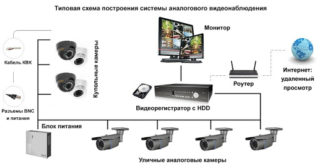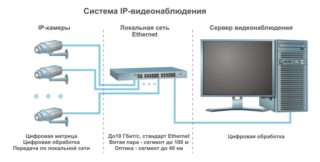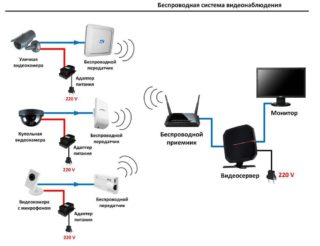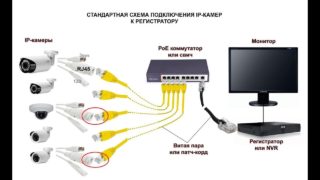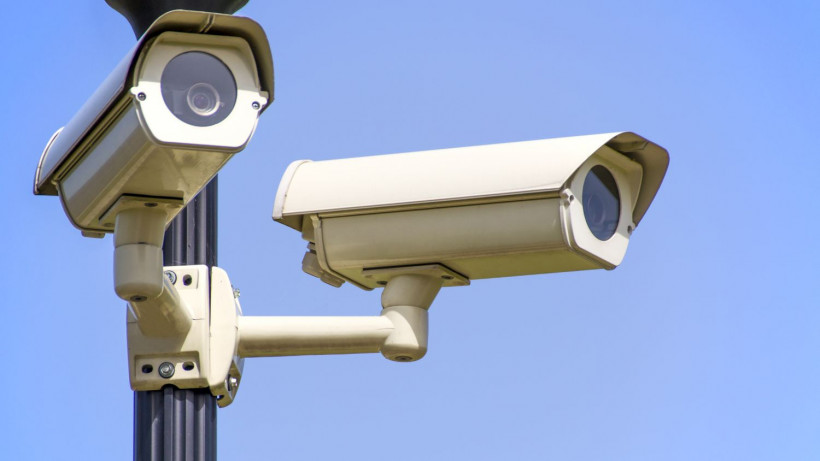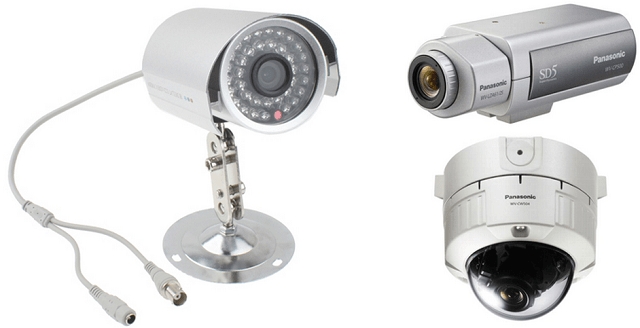Installing video surveillance in a private house is the task of every owner of a residential building, who cares about their safety. For this purpose, you need to decide on the type of system, select the appropriate cameras and read the detailed instructions that include all the main steps.
- The need to install video surveillance in a private house
- Popular options for video surveillance systems
- With analog or AHD cameras
- Digital IP and HD-SDI systems
- Ready systems
- Tracking system features
- Camera selection criteria
- The main stages of installing video surveillance in a private house
- Laying of cable routes
- Installation of cameras
- DVR and system connection
- Equipment setup
- Camera layouts
- Typical mistakes
The need to install video surveillance in a private house
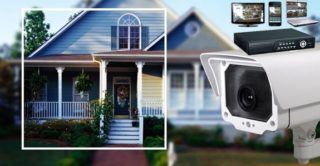
A full-fledged installation of video surveillance in a private house is a necessity, because the safety of property and health of residents depends on its presence. In addition, cameras located near the building and on the site will help to obtain evidence in the event of any illegal actions of third parties.
Most often, devices are installed on the street, for example, around the house, along the perimeter of the territory or near the gate.
Installation of cameras does not contradict the requirements of the legislation, if the angles of their view do not affect the areas of neighbors.
Popular options for video surveillance systems
With analog or AHD cameras
AHD devices are a hybrid version, in the process they process a digital signal and convert it to analog. This combination allows you to get a high quality picture and transmit it over long distances. Cameras of this type work using CMOS sensors, which are characterized by the presence of an increased amount of noise. This drawback can be eliminated thanks to special software that removes interference and improves image quality.
Signals from analog cameras are received via coaxial cables at distances of up to 500 meters, they can be increased up to 700-800 meters. At the same time, such devices do not have signal compression, so the picture on the screen will not freeze like in IP cameras, which take time to digitize the image.
AHD video surveillance for the home is considered the most economical compared to digital.
Digital IP and HD-SDI systems
Each camera has its own IP address, which is transmitted with the connection and is used in the process of synchronizing the device with the recorder. Without it, installing home video surveillance with your own hands and fully configuring the system will be impossible. Video cameras of this type broadcast streams to a server, personal computer or the cloud, the destination of the data will depend on the wishes of the user and the installation conditions.If we are talking about the installation and connection of several cameras, they are connected to the recorder using a router, switch, or use a separate port for each.
Ready systems
Video surveillance for a private house can be purchased as a kit that includes all the necessary parts. The standard list includes a set of cameras, a video recorder, a hard drive that will store data, a power supply, and cables for connection. The main advantage of the ready-made kit is the absence of problems during installation and the presence of all the necessary parts and fasteners that will be compatible with each other.
It should be borne in mind that ready-made systems are designed for a specific number of cameras, which should not exceed 8 pieces. In addition, they are not suitable for those who already have an installed video surveillance system that needs to be changed or expanded.
Tracking system features
Wireless surveillance systems operate using technologies using Wi-Fi, 3G or GSM. Their equipment includes cameras in the required quantity, a signal receiver, a video recorder, a control panel, as well as a set of routers and routers. During operation, recorders transmit signals and images from video cameras directly or via a receiver to the Internet or to a telephone. This type of system has many advantages, including independence from external sources, remote control, the ability to view information from mobile devices, and much more.
Camera selection criteria
Cameras can be analog or digital, indoor or outdoor, tailored to the needs of home owners. When buying, you need to pay attention to the viewing angle and focal length of the devices. Wide-angle short-throw lenses allow you to see the general area, long-focus lenses allow you to clearly recognize individual details and people's faces.
The quality of the picture is affected by the resolution of the camera, it is better to choose models that have less this indicator. Devices can be color or black and white, and also equipped with IR illumination to be able to clearly shoot objects in the dark. The best option would be models that can be installed on the street, in a house or apartment, combine both modes and allow you to change them depending on your needs.
The main stages of installing video surveillance in a private house
You can organize the system in the house on your own. Before installing video cameras, you will need to draw up a layout diagram of the equipment, determine the cable length and the power supply source.
During the construction of the drawing, it is necessary to outline the points for installing the devices in such a way as to eliminate dead zones. DVRs or a server are placed in places hidden from prying eyes, since this is where important data will be stored. Monitors can be installed in any convenient place.
Laying of cable routes
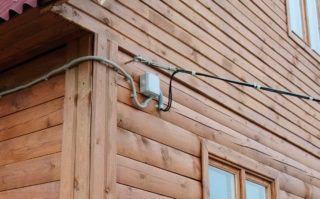
If analog devices are used to organize the system, it is better to choose coaxial cables for laying routes, which do not require the use of additional adapters. For IP analogs, twisted pairs are used to reduce the effect of electromagnetic interference. Laying the line should start from the points farthest from the DVR, and then connect nearby objects, calculating the cable length with a margin.This process can be open or closed, in the first case, the wires are placed on supports or along the fences, in the second they are laid underground or inside the walls in corrugated pipes.
Installation of cameras
The devices must provide a good overview of the entire territory and at the same time be located in places invisible to extraneous places. It is better to select fasteners for cameras separately, giving preference to the most reliable options that prevent the devices from falling and vibrating.
For safety reasons, camcorders are not mounted on metal holders.
DVR and system connection
Equipment setup
To organize a full-fledged tracking system, you will need to configure the equipment included in it. The user needs to set the time and date on each device, complete their configuration, format hard drives for data storage, and set up video recording and remote access to cameras.
Camera layouts
The location of tracking devices depends on the size of the area to be monitored and its additional features. It is best to position the cameras in such a way that it is convenient to remove them when replacement or repair is necessary.
Typical mistakes
At all stages of organizing a tracking system for a private house, it is important to avoid common mistakes in order to get the desired result:
- incorrect calculations arising from problems in the process of measuring the distance from cameras to the recorder, as well as unsuitable cables;
- power problems that can cause devices to fail at the wrong time;
- errors when choosing a storage method and disk capacity.
The wrong selection of system components can also lead to difficulties with its operation.

